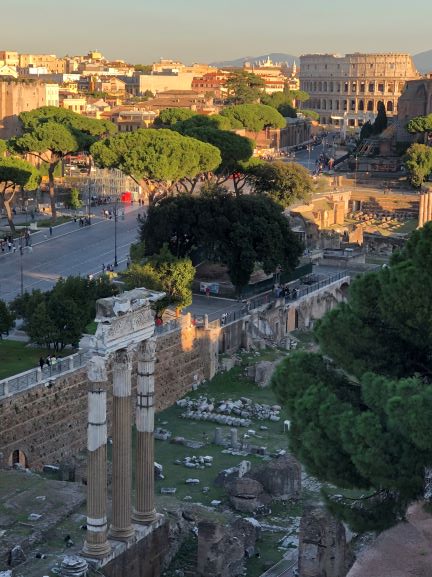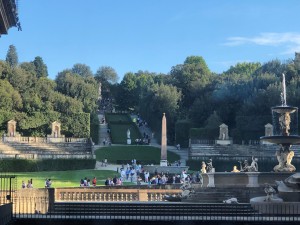Welcome back to my writer’s blog! I hope you enjoyed my last post, Then and Now. Thanks for reading and sharing with friends! And if you’re new to my blog, thanks for tuning in. You can access that post from the Blog list on the header menu at the top of the Home page.
So, I ended my last post by leaving a hint for the topic of this one: Dan Brown’s Inferno. Any ideas?
Well, to quote Dan Brown himself from his writing Master Class video, “Suspense is all about making promises to your reader. You’re telling your reader: I know something you don’t know, but I promise I’ll tell you if you keep going.”
Did I succeed in creating just a little suspense with my hint and promise to tell you in this post? I know, it’s not too dramatic, and I’m sure no one lost any sleep waiting for the answer, but by way of illustration I think you get the idea.
Now about that hint—Inferno. Expecting me to describe what the book is about?
Yes, Inferno has Dan Brown’s trademark mix of action, suspense, symbology, and of course Robert Langdon as the protagonist, dodging all sorts of harrowing situations.
But sorry, that’s not what the hint refers to. (A little more suspense here, maybe?) You’ll have to read the book for yourself to learn how the title relates to the story. More suspense, but that’s Dan Brown’s promise to deliver on, not mine!
Since you’re still reading this post, or “kept going” in his own words, I assume you expect me to keep my promise and tell you what it is about Inferno that I was really hinting at.
Yup, that was my promise. Ready? Okay, so here goes . . .
But wait. As with any good novel, a little backstory is in order. Here’s mine.
Immediately after my wife and I were married, we moved to Rome where I was enrolled in medical school at the University. We lived there for two and a half years before we moved back and I finished medical school and my residency in Baltimore. Those years in Rome were an amazing life experience, even though our available funds were pretty slim. But we came to know the Eternal City very well, and love it even more. We’ve returned several times over the years, once with our three children. It’s hard to describe, but if you have ever been there yourself, you know what I mean.

For starters, the juxtaposition of ancient Rome with modern European culture is fascinating. Remnants of Roman antiquities―the Colosseum, Roman Forum, and Pantheon, and what seems to be an endless list of others―are dispersed among modern apartment and office buildings. Centuries-old cobblestone streets, worn smooth by the years, are now routinely traversed by buses, trucks, and sleek automobiles, not to mention modern day Romans in their European-chic attire—a far cry from the horses, wagons, and sandal-clad pedestrians of the far distant past.
One can find, either intentionally or by accident, many a small side street where a nondescript church houses a storied work of art by Michelangelo, Raphael, or any one of the many other Italian artistic geniuses of the past. The irony of driving in a motorized vehicle on the street which encircles the Circus Maximus, where chariot races were daily held, is inescapable. And yet the fashion and other accouterments of daily Roman life are truly cosmopolitan and clearly reflect its contemporary culture.
So that’s my backstory.
Last October, 2019, before the Covid pandemic altered our daily lives as we knew it, my wife came to me and said that she needed a “Rome fix.” I didn’t take much convincing, so we took an impromptu trip back to Italy and visited our favorite places, Rome included. We reveled in some of our favorite Roman sites—the Colosseum, Vatican, the Trevi Fountain, Piazza Navona. The food and the people. Bellissimo! We felt right at home.
All this is interesting, you say, but what does it have to do with Dan Brown’s book? After all, that was the Inferno hint I promised to explain, right? So here it is. Location. Every story has to have a location, a notable backdrop. And that’s what the hint referred to—the location, or backdrop, for Inferno.
Ah-hah, you say. Of course, it’s Rome!
Uh, no, that’s not it.
But didn’t I promise to tell you? After all, you did keep on reading. Sure, I made that promise. But I never said I wouldn’t try a little misdirection to keep the suspense going until I was ready to tell you! You know, throw the proverbial curve ball or two along the way. In this case, setting up Rome as the obvious choice.
The correct answer is . . .
Florence, the Italian medieval city that is considered the birthplace of the Renaissance, and is the location for most of Dan Brown’s Inferno.
There, see? I kept my promise to tell what I knew and you presumably didn’t, if you kept going with me.
When we traveled to Italy last year, we also stayed in Florence for several days. And when I recently read Inferno, it was like I was there all over again. So many of the city’s sites we enjoyed were in the book.
We stayed in an Airbnb, a very modernized apartment about a ten minute walk from the Piazza del Duomo, home of what is arguably the city’s signature structure, the Cathedral of Santa Maria del Fiori and its iconic red dome—Il Duomo—engineered by the famous master Filippo Brunelleschi. The octagonal Baptistery of St. John and its three sets of bronze doors with artistic sculptures fronts the Cathedral within the piazza.

with Baptistery in foreground.
The cathedral, and particularly Il Duomo, play a pivotal role in Dan Brown’s Inferno.
Examples of Italian Renaissance art, possibly the most recognizable of which is Michelangelo’s sculpture of David, can be found in the Accademia Gallery. Even more resplendent is the Uffizi Gallery, with innumerable artistic works. Of course, such works of art abound throughout all of Florence.
The Ponte Vecchio, with its sellers of jewelry and other fineries, makes for an enjoyable—if not expensive—stroll.
The Pitti Palace, once a residence of the powerful Medici family, houses several museums and is a must see, as are the attached Boboli Gardens.


I could go on and on. Needless to say, Florence is a cornucopia of art, architecture, and history. And the food and wine aren’t too shabby, either! But then again it’s Italy, home of the best cuisine around. (Can you tell I’m a little partial, here?)
So there it is. I hope you enjoyed my mini-travelogue of Rome and Florence, and my attempt to illustrate Dan Brown’s recipe for suspense.
One last thing. If you have Netflix, you must watch “Medici.” It’s a fascinating series depicting the rise and fall of the financially and politically powerful medieval Florentine family.
Thanks for reading. Don’t forget to share with your friends, and subscribe to my website email list for automatic notifications when I publish a new post or for my writing journey updates. You can find the email sign-up form on the Contact page.
See you next time, and keep reading!
